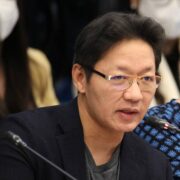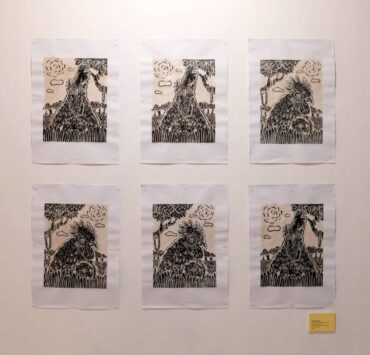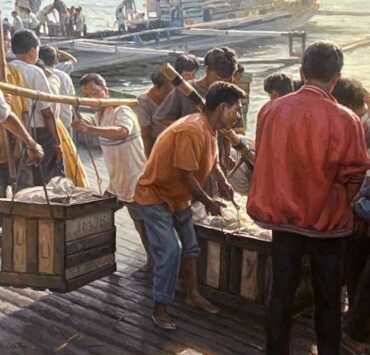Michael Orlina embraces his shifting reality
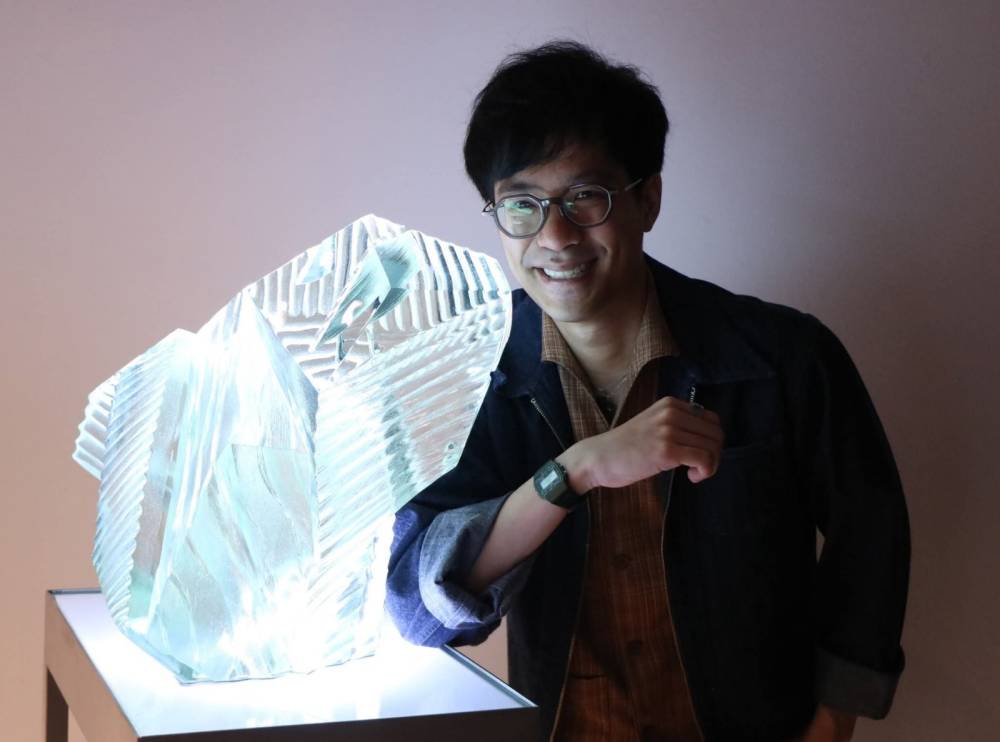
If somebody had asked Michael Orlina a few years ago if he’d follow in his famous father’s footsteps, the answer would have been no.
Having majored in arts management at De La Salle-College of Saint Benilde, he saw his future self either running a museum, curating, or maybe opening his own gallery, and helping manage his artist sister Anna’s career.
Even when he went with Anna to the United States for the first time back in 2016 to learn more about what is out there in terms of glass sculpting, the youngest among renowned glass sculptor Ramon Orlina’s brood told Lifestyle that becoming a full-time artist hadn’t really been part of the plan.
In fact, until recently, the 27-year-old was still hesitant to call himself an “artist.”
“Now, I’m much more comfortable saying I’m an artist, but sometimes I phrase it as ‘I do sculpture’ or ‘I make sculptures.’ It’s a funny way to phrase it, but it’s not lying,” said Michael at his first solo exhibit.

A reflection of his journey, “Shifting Reality,” which ran at Gallerie Stephanie in Shangri-La Plaza until yesterday, illustrates Michael’s continuing exploration of his chosen medium, and how knowledge of the cold-working technique and tools enables him to play with a block of glass in a variety of ways to create different shapes, figures, and textures.
With only eight pieces on show, Michael is able to give his audience “a taste of everything.” Demonstrating both artistry and mastery of his art, he used the same tools to get different effects. The same machine he used to create frosting on one sculpture was also used to carve out grooves in another by changing the amount of pressure and the coarseness of the grit. The same tool for shaping also created ridges by applying more control when etching out the lines.
“There’s a lack of cohesion, but that’s intentional because I wanted to show the different things I can do, my different tastes, my different themes, my different ways of expressing my art.”
Learning curve
He is still experimenting and learning, though. Even with his studies abroad and first-hand lessons from the Father of Philippine Glass Sculpture himself, there is still much to discover about his art. The multicolored rocket ship went through a lot of trial and error, for example, requiring him to dismantle the whole thing and find another way to make it work when the glue began to separate. That piece, however, is one of his favorites.
“I like things that are a bit out of this world, surreal, like something changed in it,” he said, as he further explained the theme of his exhibit. He also has pieces that look like a chunk of alien moon and another resembling desert formations inspired by the book “Dune.”
“I feel like this sci-fi, space thing is very me and something I’m going to try to explore in upcoming shows.”
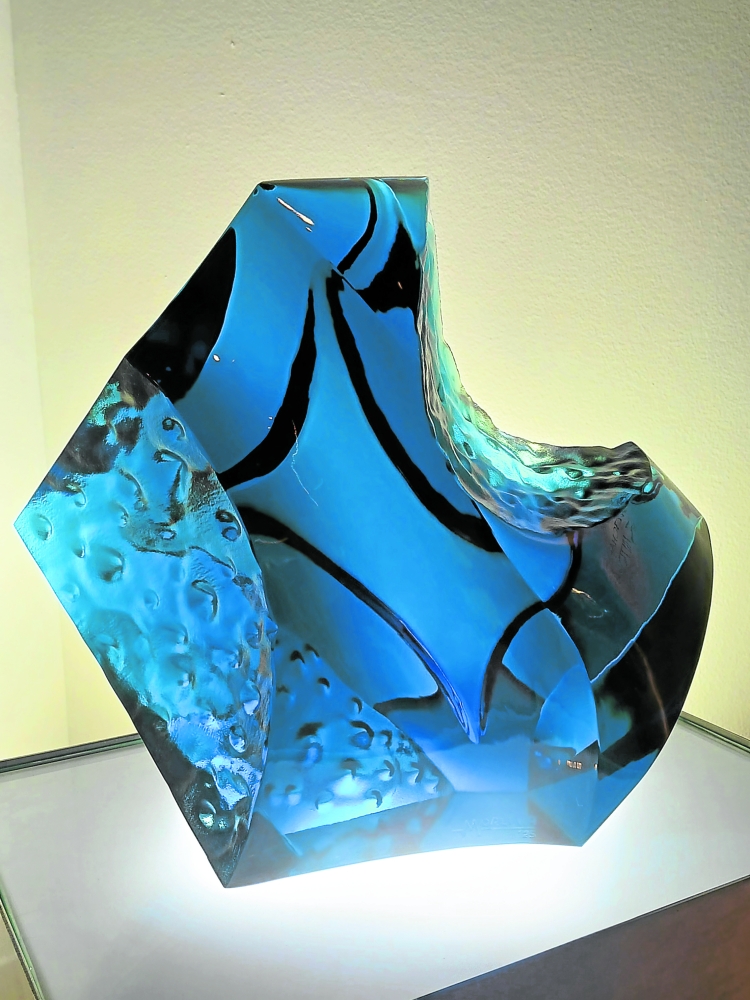
Indeed, there’s a fresh youthfulness to Michael’s works that’s uniquely his—not an easy feat, considering the greats that have come before him in his family, no less: Ramon, who has become almost synonymous with “Philippine glass sculpture,” especially with his signature green glass creations, and Anna, with her pretty pastel pieces that likewise delve into pop culture themes.
Some people see similarities between his and his father’s works, but that doesn’t bother Michael. According to him, such comparisons are “unavoidable, especially now.” He noted, however, that his intimate knowledge of his father’s pieces helps inform his own artistic vision so as not to create seeming copycats.
“My theme is something definitely unique to me. We think very differently in that aspect,” he said. “Let’s say, mountains. I’m not going to do green mountains.”
“Glass is a fascinating medium. There are really so many things you can do with it,” he added.
Michael did get some inputs from Ramon in creating his pieces. In fact, “Pegasus” was a challenge from his dad to create an entirely opaque sculpture—although Michael ended up polishing a few facets to create peepholes through the glass after they both determined that it felt like taking away what’s “inherently there and could be.”
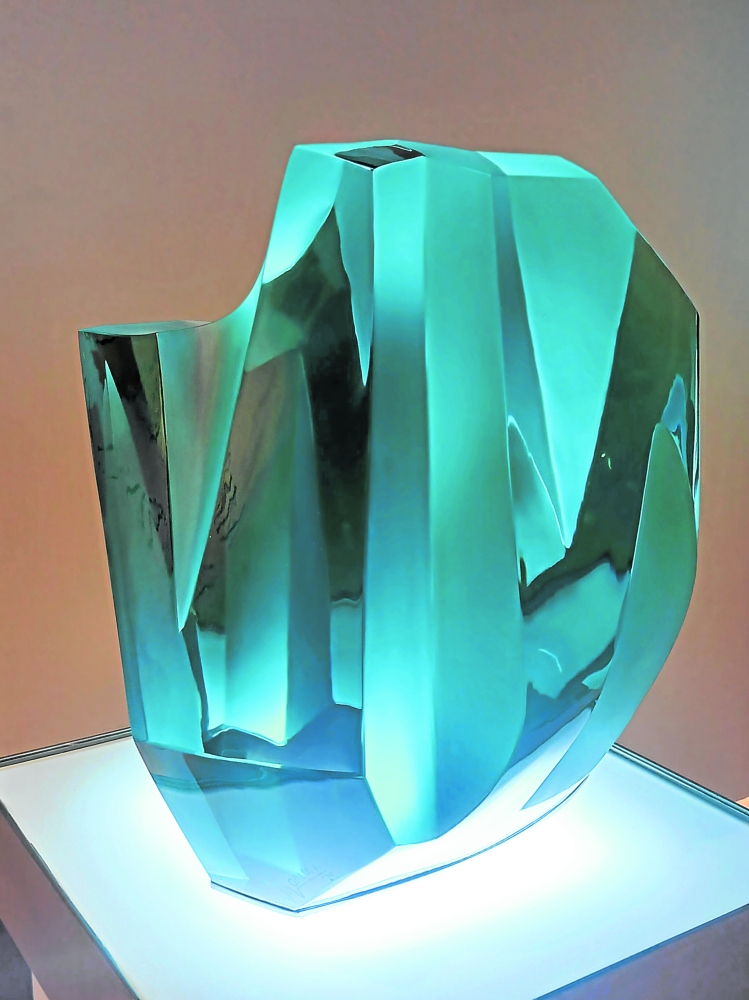
“I always see this shifting reality process itself because you don’t actually see the full beauty of the sculpture until you polish everything. Then that’s where it comes out and then you’re like, ‘Wow, it’s nice’ or ‘Oh, something’s wrong,’” explained Michael.
The polished or clear facets allow the viewer to see through the medium and appreciate the sculpture’s multi-dimensionality. Ramon, according to Michael, calls this “lampasan.”
Growing up, he learned to understand Ramon’s work lingo, like “taga-taga” for cuts and “victory” for an angled inward carving.
People skills
He also learned to develop his eye. “How you’re looking at the sculpture, how you look through it, how you look inside of it—that’s so important, and I think I’ve been learning that since I was small,” he said.
His personable father also taught the younger Orlina how to be a people person. “He’s very friendly, he’s very real and sends messages all the time. As an artist, like it or not, there’s a public relations aspect to it, and you have to put yourself out there.
“Of course, people should make art for art’s sake,” Michael added. “But if you want to have a career and raise a family like he did, you need to professionalize yourself as an artist.

“You have to think about your finances and running an office, making sure your workshop is running well, that you have your materials, your tools, and that your equipment is in good shape. These are things that are almost like admin work already, but having these working will allow you to be an artist fully, and allow you to bring out more of your talent, your creativity, if you have a solid foundation,” he said.
Michael particularly admires how Ramon is so good with time management. “I see his work ethic. Fifty years is no joke. People see his success now, but 30, 40 years ago, it was not like that. I want to be able to emulate his hard work.”
He’s also grateful for his mom Lay Ann’s talent in making sales and holding exhibits. The young sculptor feels blessed to have almost everything he needs provided for him, even a ready clientele.
“I’m very blessed to have his clients become interested in my work, but, of course, I also want to grow my own clientele,” he said, adding that while some of his pieces were bought by family friends and people they’ve known for a long time, the gallery was also successful in selling to a new buyer.
“Of course, you’re very thankful for collectors because they collect, but a new collector is something else.” Achievement unlocked.



